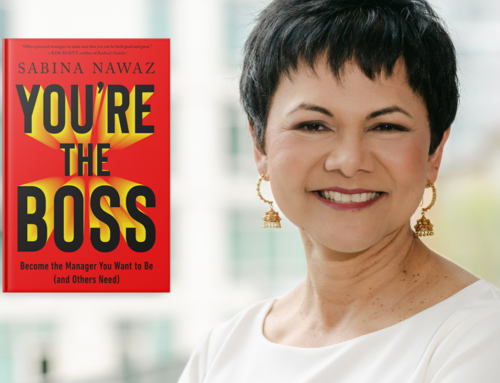In his NY Times Bestseller, Delivering Happiness, Zappos CEO Tony Hsieh advises public speakers to “wing it.” I am driven to take up the cudgels and protect people from that spectacularly bad advice.
What’s Hsieh’s story? As CEO of the phenomenally successful Internet-based shoe company, Hseih received more and more invitations to speak as the company became better and better known.
Apparently, it was not a task that he looked forward to with much enthusiasm. He says he had done little of it, and got quite nervous beforehand. But he agreed to the speaking because each speech represented an opportunity to tell the Zappos story to a new audience and spread the good word about the company’s success. In that way, Hseih figured, he’d sell more shoes, get more recruits, and continue to grow the business. Very smart.
Unfortunately, as smart as he was in realizing a good marketing opportunity, he turned out to be sadly dumb in his approach to public speaking. Here’s what he did. He wrote the speech out beforehand, and “spent a month memorizing it and rehearsing it.” As a result, when the day came, he was nervous, short on sleep, and glad when the speech was over.
He reports that he did an “OK” job, but the whole experience was not a pleasant one, even though it was good for Zappos business.
Part of his dislike of the whole experience came from when he inevitably forgot one of those memorized lines, and went into a tizzy trying to recall it so that he would give the audience the entire speech as written.
Then, in the midst of all this misery, Tony had an “ah ha” moment. He realized that the audience didn’t know when he dropped a line, because it didn’t know the speech beforehand. That was liberating, but there was more to come.
Tony started getting feedback from his audiences that they really enjoyed his personal stories about the business, because he was passionate about those stories and Zappos, and that made for a more entertaining speech.
So for his next speech, he abandoned the script and the rote memorization and just told stories selected on the fly from the stock that he had developed during his Year of Living Miserably giving memorized speeches.
The result? He got into the “flow” and had a ball telling the stories. The audience responded better, and the whole thing just clicked. So, Tony concludes, when you’re going to give a speech, “just wing it.”
But hang on a minute. Tony’s not winging it. Winging it is making it up as you go along. But Tony already has a pretty good idea of what he’s going to say. He’s going to choose from a finite list of stories he’s told many times, and about which he’s passionate.
That’s not winging it, that’s giving a modular speech, a speech constructed out of familiar chunks that you’ve done many times before.
Tony’s advice is quite good, when you ignore the headline and concentrate on what he’s really saying. Don’t wing it, because you’ll always look like you’re doing it for the first time. The result is that your body language will telegraph “first time!” and your audience will get an impression of you (inexperienced, nervous, inauthentic) that is most likely very different from the one that you want to convey: confident, cool, in charge, competent – you pick the adjectives.
Instead, tell stories that you’ve rehearsed many times and that you know really, really well. Stories that you’re passionate about. Put those stories into a simple structure (like the problem-solution format that I've blogged on before) that makes the point that you’re trying to make with those stories, and you’re all set.
Oh, yes: and keep it real. Then you’ll rock the house just like Tony.








Nick:
I’d previously blogged about Tony’s article and quoted from one of your earlier posts here:http://joyfulpublicspeaking.blogspot.com/2011/03/when-giving-speeches-just-wing-it.html
You probably will enjoy the image I used to illustrate what someone winging it looks like to the audience.
Hi, Richard — thanks for the comment and the blog. Great stuff! The experts are agreed: don’t wing it!
Nick
I agree, Nick.
Winging it is nuts, and when Tony got good, he was not wining it.
Personal stories connect with the audience, and a speaker doesn’t need to memorize anything for those because the know them.
Rehearsing is essential though. Steve Jobs works for weeks on a keynote that is less than an hour.
Nancy Duarte rehearsed eighteen hours for an eighteen minute TED presentation. That’s an hour’s rehearsal for each minute presented – and she’s a seasoned pro!
Thanks for the Post!